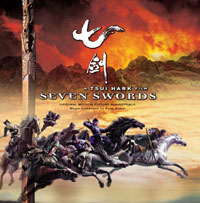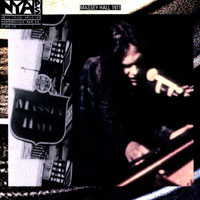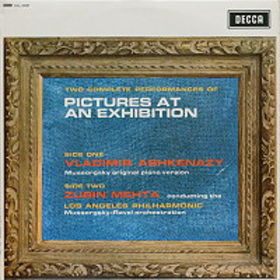The Burmester Sound
When word had gotten around to our local audiophile community that the Burmester system displayed at the TAVES show was making great tunes at my house, curiosity combined with a desire to listen to the setup led to some of the wittiest humour.
“Just as the fall of Rome led to the rise of the Byzantine Empire for the next 1000 years, the dominance of McIntosh amplifiers in your home will soon be. Now comes the reign of Burmester. It is inevitable ”, said Aleksandar Matijaca (Founder of the Toronto Audiophile forum on Yahoo).
“This marks the end of an era, welcome to a new chapter in your life”, said another.
Within the next few weeks, many of them came over to experience Burmester sound. They wanted to be ‘shocked and awed’, and ‘shock and awe’ was exactly what they got. Despite having 1,230 Watts less per channel than my reference McIntosh MC2KW, a 2000 watts system, the Burmester system stood tall on its own by showing off an elegant and powerful sound with every type of music I played. If I had to choose a single phrase to describe the sound of the Burmester system, I’d call it, “A graceful display of musicality, with accuracy and dynamic contrast”.
The words I chose to describe the sound were not a mere array of verbal gymnastics as often found in glossy high end audio brochures. Each of the sonic characteristics produced by the Burmester was not difficult to achieve on its own, but combined as a whole, it became a rare trait which many systems would fail to deliver. For instance, the Bryston 7BSST, Plinius P8 or the SimAudio W5 are all powerful amplifiers which can easily deliver a sound with high dynamic contrast, yet to my ears they are less refined brute forces which registers lower on the musicality scale. At the other end of the spectrum, you have amplifiers such as the Shindo Montille or the McIntosh MC2102 which are fully capable of delivering a sweet and intimate performance, yet they are just a tad too soft and supple for my taste, and could benefit from an added dose of dynamic contrast and frequency extension.
With a listening room measuring 16’ x 36’ x 10’ with two openings on the sides leading to a hallway 2 ½ times the size, it came as no surprise that not many amplifiers on the market could power my speakers to achieve a room-filling sound pressure. The Burmester 911 Mk3, however, did a marvelous job. They delivered a deep soundstage which completely filled the open space. The holographic image had a sense of weightiness and solidity that makes you envisage real, life sized instruments playing directly in front of you. When I played “The Gnome” movement of Mussorgsky’s Pictures at an Exhibition (Zubin Mehta conducting the Los Angeles Philharmonic, DECCA SXL 6328 ED4), the massed strings in the opening tense segment , combined with the sudden explosive burst of percussive instruments frequently startled the listener. To achieve the intensity which the music demands, immense reserves of power are required. The good news is the 911 Mk IIIs did deliver, and in a style which commanded authority and powerful dynamic swings, thanks to their high damping factor. Double bass was rendered with plenty of texture and extraordinary definition. The timpani was solid and chest pounding. Individual instruments were well separated in the acoustic space, with a clear distinction between instruments themselves versus the black background, creating a solid and weighty physicality to the images.
If you feel Mussorgsky’s composition is not convincing enough as a test for system dynamics, Kenji Kawai’s soundtrack on the Asian film “Seven Sword” will surely make you want to buckle your seatbelts. If you do not yet own this recording, I urge you to do yourself a favour by picking one up if you have a system capable of delivering thundering dynamics, although it may not be best recording as background music for a romantic dinner.
Contrary to popular belief, power does not come by sheer volume loudness or how far you can turn on the volume dial. Sufficient power is reflected through the rise time of dynamic swings as well as the stability of the projected holographic image. Insufficient power is reflected through a disorganized sound stage where instruments are all scrambled together, with a sound which resembles thrashing heavy metal guitars; it is reflected through harshness, brightness and a sound which originates from a region of power curve which is highly distorted. Listening to Kenji Kawai’s composition, the Burmester system had the ability to capture my attention and immerse me into the emotional roller coaster of the soundtrack, bringing back vivid images of Donny Yen’s battle with his adversaries. The Burmester was always in control.
I pushed the 911 Mk3 amplifiers with the tracks “Encounter at the Shrine” and “Seven Swords’ Victory” (Seven Swords Original Soundtrack, Recall Music ), the music was intended to be loud so I cranked the volume to nearly 80% on the dial. Make no mistake, the Burmester amplifiers came close to matching but not equaling my 1,200 lbs, 2000-Watt McIntosh MC2KW, delivering an undistorted, well composed dynamic contrasting performance with unmitigated emotional intensity which was “terrifying,”, as Kenji Kawai had intended the music to be. Kenji Kawai’s timing called for passion and fire, and it was well delivered by the Burmester system at very high volume without ever causing any listener fatigue. Never once did I felt the need to turn the volume down which tells me they did not distort and were firmly in control of the Dynaudio woofers at all times. Even when pushed, the 911 Mk IIIs gave a reassuring sense of comfort that there were still plenty of juices left in these amps.
- ← Previous page
- (Page 3 of 4)
- Next page →





Many thanks for your thoughtful review – although it wasn’t a review of the phono stage per se, I could see that there are some very strong elements in this line that are worth striving for in a system. The elements of their line are out of my price range, but I am focusing at present on their phono stage and wondering whether it will elevate my analogue experience.
thanks again,
rob
Of the many phono stages I have owned in the past, the Burmester PH100 is currently my reference. It is remarkably full bodied, with a strong strong dynamic contrast. Despite being a solid stage German made phono stage, it has even more body and weight to my tube AR Ref SE II, and renders the belief that solid state phono stages are cold and sterile, invalid. It most certainly does not apply to the Burmester PH100.
“A fancier, chrome version of the same remote can be purchased from Burmester for an additional $1,675.” / fancy indeed.
I am on the market for Burmester product,please send me a price list or email me the information